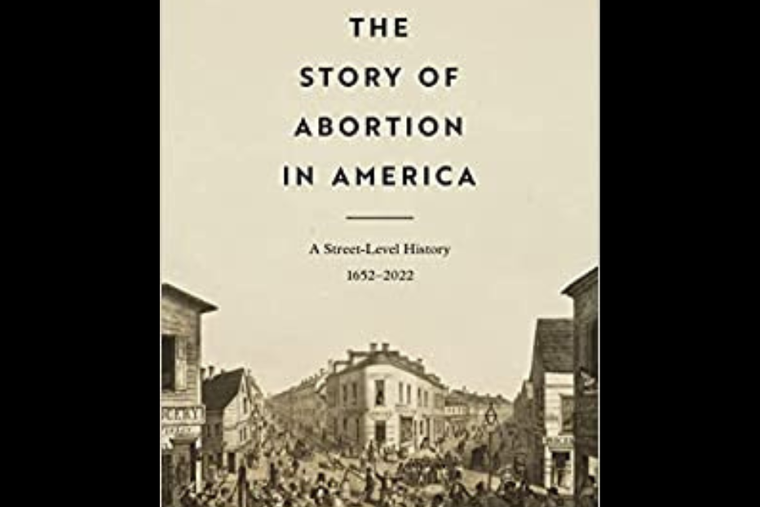The History of Abortion in America
Outside of laws surrounding the issue of life, this new book offers a real ‘street-level’ perspective on abortion.

THE STORY OF ABORTION IN AMERICA:
A STREET-LEVEL HISTORY, 1652-2022
Marvin Olasky and Leah Savas
Crossway, 2023
512 pages, $39.95
To order: crossway.org/books or (800) 543-1659
If you have any pro-life interest at all, get and read this book!
There are very few thoroughly researched pro-life books on the market. This one is unique: It looks at abortion not from the rarefied perch of the law, but from the “street level” — as abortion took place in America. It is also both gripping and well-written: The documentation is solid, but the style is readable and engaging.
This book carries us from abortion in the 13 colonies to America on the eve of Dobbs, i.e., last June. It explodes myths and shows how Americans have always been of two minds about prenatal killing. Perhaps most striking, it shows that there’s nothing new under the sun about abortion in America.
Pro-abortionists claim that American women were free to abort until the first anti-abortion laws were enacted in 1821 in Connecticut. That’s just not true.
We have records of prosecution of abortion from Maryland in 1652. There may even have been a case in Virginia involving the abortion of a female servant in 1629, but court records of that era were lost during the Civil War. Connecticut’s abortion law grew out of a trial in which an Episcopal clergyman sought to evade responsibility for obtaining an abortifacient for a woman he seduced and impregnated. In terms of the first jurisdiction to enact an anti-abortion law in what would be America, that honor goes to the New York City Council, which, in 1716, forbade midwives to advise or assist in abortions.
Marvin Olasky shows how, in early America, convictions for procuring abortion were rare — not because abortion was permitted, but because establishing beyond a “reasonable doubt” existence of a pregnancy, much less what caused its loss, was extremely difficult before medicine understood the female reproductive system in the 1800s.
The authors take the reader on a fascinating tour of abortion in four centuries of American history.
Today, abortionists talk about circumventing pro-life laws by sending abortion pills through the mail. Abortion in America began with herbal abortifacients and only later turned to surgery. Pro-lifers complain about how abortionists trade in euphemisms to avoid saying what they do. Olasky shows how 19th-century newspapers profited from ads for doctors who would “regulate menses” for “afflicted women.” Pro-lifers complain about how some politicians are in abortionists’ pockets. Tammany Hall protected some of 19th-century New York’s most notorious abortionists for a “price” (bribe). Did you know that the YWCA originated as a Christian safe haven to provide wholesome living arrangements for young women moving alone for work to America’s growing cities? Did you know Lysol first hit the market as an abortifacient, used to “sterilize” the process, with frequently fatal consequences?
Pro-lifers who despair that they might not be winning the battle for hearts and minds, even as they win legislative votes, learn that pro-life politics and practical pro-life help have always gone together in America. While admitting that legal prosecution of abortionists was difficult because of the activity’s clandestine nature, pro-life doctors in the 19th century “did not see laws as useless. … Statutes designed to protect unborn children sent a message: Abortion is wrong. Laws did not end abortion but they could reduce the casualties, similar to how laws against drunken driving today cannot end the practice but can save lives. Doctors and others in the late 19th century kept coming back to the need for demand-side pro-life work, or what some today call a culture of life.”
On Jan. 22, Roe would have been 50 years old — and, with its demise, the battle for life takes both new and old forms. This book is a vital armament in the post-Dobbs fight.
John M. Grondelski writes from Falls Church, Virginia.















